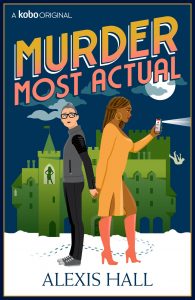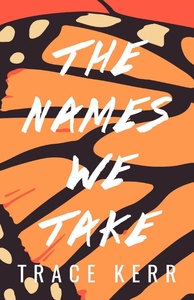Clue is my all-time favourite movie, and I’m a sucker for any kind of snowed in story, so when I heard the premise for Murder Most Actual, I was immediately hooked. It follows Liza and Hanna, who have booked a getaway in a fancy hotel in the Scottish Highlands to try to patch up their marriage. Liza’s true crime podcast has recently taken off, which has left them less time to spend together. Now, they seem to constantly be bickering, especially since Liza feels like Hanna can be overbearing as well as judgmental of her passion for true crime. Hanna booking this trip without asking her didn’t help. But what is supposed to be a romantic getaway quickly turns dark as a guest turns up dead—and that’s just the beginning. Liza dives into trying to solve the mystery, but Hanna would rather lock the two of them in their room until the snow clears and they can escape.
I completely understand the Clue comparison: this is a murder mystery that is more wacky hijinks than serious drama. Many of the characters are over-the-top, including a femme fatale seducing everyone in sight and a private detective who speaks in a thick (fake?) French accent and refers to himself in the third person. There’s also more direct references to the game, including chapter titles that follow the format “[Character] in the [location] with the [object]” and characters being associated with colours (the colonel with mustard yellow, for one).
The writing also reminds me of the wit and weirdness of Clue dialogue. Hanna remarks, “It’s like she’s come to a costume party as the abstract concept of heteronormative sex.” An awkward moment is described as: “the words still hung in the air like really unwelcome snowflakes.” All together, these elements make it feel like a murder mystery party performance.
There’s an interesting contrast between this theatrical setting and characters with the sometimes painfully realistic depiction of a marriage on the rocks. The know each other deeply and care about each other a lot, but every disagreement is connected to every other argument they’ve ever had. There are layers of subtext to conversations. They walk on eggshells and take offence easily with each other–while also being protective of the other to anyone else. I think it worked well to ground the story and it gave it stakes, even when the murders don’t have that same gravity.
I don’t read a lot of mysteries, partly because I don’t pick up on the little details that would allow me to piece the mystery together. When I do, I tend to not try to solve it and just allow myself to be immersed. So I can’t really evaluate how well the mystery element worked, but I will say that I didn’t see the ending coming. It isn’t a neat and tidy wrap up at the end: it’s messy and human.
There were lots of elements I loved about Murder Most Actual, but I did feel like the middle dragged a bit. I was expecting to rave about this, but I didn’t connect quite as much as I expected to. That’s an intangible, vague complaint though, and I still liked it overall. It was a fun read during December (even though this is actually set around Easter!), just as the snow started coming down!
Note: this is a Kobo exclusive title, so you won’t find it on other platforms.


